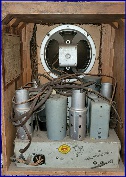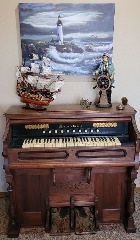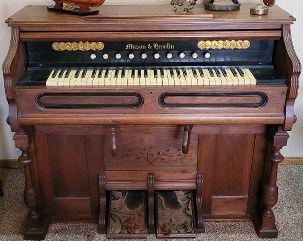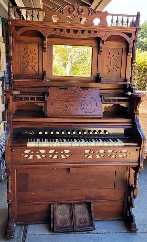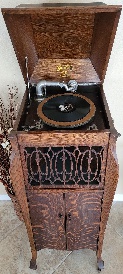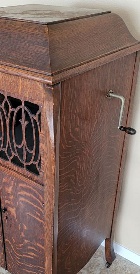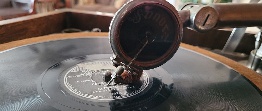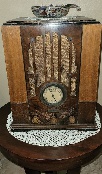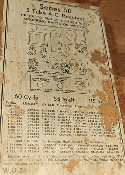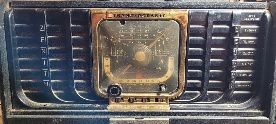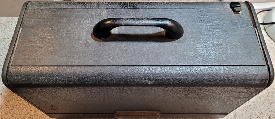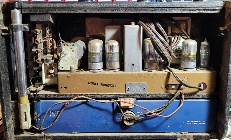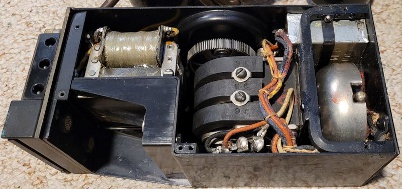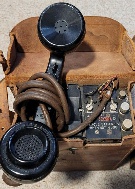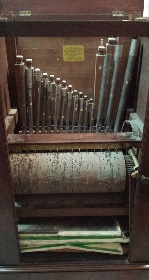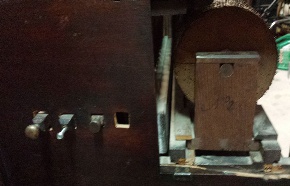|
|





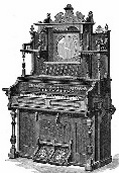
Antiques
Over the past few years we have come into possession of several interesting antique items. Three of them are mechanical
musical devices that I've come to appreciate for their ability to operate and entertain without electricity. These were
designed and built back when not every household had electricity, and the only choice for playable entertainment were these
types of machines.
I think my favorite at this point is the parlor barrel organ which is capable of
playing a number of tunes on two ranks of pipes. A hand crank, when turned,
spins a wooden drum with ten tunes on it and also pumps a bellows that provides
the air pressure for the pipes to play the tunes from the drum. [See the VIDEO]
I have two pump organs which use sets of tuned reeds played via the keyboard. The air flow needed for the reeds to make
sound is produced by pumping two foot pedals which creates a vacuum (that's right, vacuum, not pressure) inside an internal
bellows physically linked to an 'air box' under several sets of reeds. The cabinets of these organs are beautifully crafted out
of real beautifully finished walnut wood. I really love the craftsmanship that used to go into stuff like this and wish it was as
prevalent today as it was back then (even in mass-production factories).
It came with two drums, each with 10
tunes selected by moving a mechanical
slide mechanism. The square pins
show to the left are the 'stops' to select
which pipe ranks will play. Two of the
ranks are missing but the two
remaining ones both play the tunes
from the drums. I need to do some
work on the stops as you can see. I
would like to some day find (or make)
the pipes needed to fill out the
remaining two ranks.
This is a Sonora record player which plays the old hard brittle shellac 78 RPM records
of its day. This floor-standing player is very similar to the more recognizable Victorola
brand, and is operated using spring power. The crank winds the spring then the release
lever ls opened to allow the turntable to spin. The arm is then manually placed on the
record outer edge to begin playing. The sound is produced when the recorded sound in
the groove moves the round membrane on the side of the drop-arm via a mechanical
connection to the needle (below). The sound is 'amplified' as it travels through the tubing
to the sound exit below the turntable (right). The sound comes out louder than you
would expect. [Short Video]
This is the Mason & Hamlin we obtained from a church
bazaar several years ago. It was pretty much non- functional
as far as the very leaky air bellows components inside.
I've gotten it somewhat working with good
old duct tape but will need to do a full
pneumatic rebuild on it. It had an optional
top (shown in the old catalog ad to the
right) but I have not found one for it so far.
I love the sound of this thing though! It will
be worth the time it takes to rebuild.
This pump organ was a local find. The guy who had it just wanted it gone and even paid me to take it away. It is some
off-brand and I've had a hard time finding any info on it. Local finds of pump organs are pretty rare on the west coast so it
was a surprise to see the ad right in my own neighborhood.
This organ has good air components, not leaky at all which is very good as it's quite a bit of work rebuilding that part of the organ. It does however need some work on the mechanical linkages that connect the stop knobs to the reed chamber mutes. With all stops in it still makes sound when played... there should be no sound until at least one stop is pulled. Looking forward to getting to this one as it should be less trouble to get fully operational than the Mason & Hamlin, although I do like the M&H's tone better.
This organ has good air components, not leaky at all which is very good as it's quite a bit of work rebuilding that part of the organ. It does however need some work on the mechanical linkages that connect the stop knobs to the reed chamber mutes. With all stops in it still makes sound when played... there should be no sound until at least one stop is pulled. Looking forward to getting to this one as it should be less trouble to get fully operational than the Mason & Hamlin, although I do like the M&H's tone better.
Barrel Organ
Pump (Reed) Organs
Sonora Record Player (78RPM)
These antique devices do require electricity to operate, but they are no less loved than the non-electrical ones. I have a few very
old radios and a guitar amplifier that employ vacuum tubes internally for their electronics. I love the look of the old radios with
their beatifully well crafted wooden cases. It will be challenging to restore these to operation but well worth the effort.
Here are a set of two WW2 era battery powered US Army field telephones that
will also need to be restored to operational status and I have actually found
schematics for them which should make restoration a bit easier. These radios
connect via copper wire up to 7 miles apart. You can easily tell which one was
used in the field and which was probably in a command tent. I'll need to open
the ugly one up and check its internals.
Radios
This is a Wells-Gardner shortwave / standard wave 'tombstone' style
radio. Can't be sure of the year yet, can't find a match to it in web
searches, although it does have some text hand-printed on the back
of the chassis that appears to be a date (Jan 9-45).
The radio will need a re-cap (or at least test the capacitors) at minimum prior to powering it up for a test. It has the pictured layout diagram to ID the tubes and controls pasted inside and it's pretty much intact other than a little deterioration. I may see if I can find more info using the listed patent numbers.
The radio will need a re-cap (or at least test the capacitors) at minimum prior to powering it up for a test. It has the pictured layout diagram to ID the tubes and controls pasted inside and it's pretty much intact other than a little deterioration. I may see if I can find more info using the listed patent numbers.
WW-2 Army Field Telephones
One view shows the internals (of
the cleaner one) where the
ringer can be seen as well as
where a portable handset can
be plugged in (the three jacks to
the left). The handset and D-cell
battery compartment also
shown here. I removed the
electrical box by removing
several flat-head screws
securing it to the leather case.
There was a metal cover
protecting the internals which
was removed to see inside.
Here is a Zenith 'Trans-Oceanic' multi-band portable radio. It is actually portable
even though it's a tube radio, with a multi-voltage battery included inside the
chassis. This battery will of course need to be replace or rebuilt, but I believe it will
work plugged in to AC also. It will need a thorough check-out and probably re-cap
job before powering it up for the first time.
This was a thrift-shop find and had the power
plug cut off, which was probably a smart move
on somebody's part. Should be interesting to try
out once I get it to a point where I feel
comfortable powering it up.



